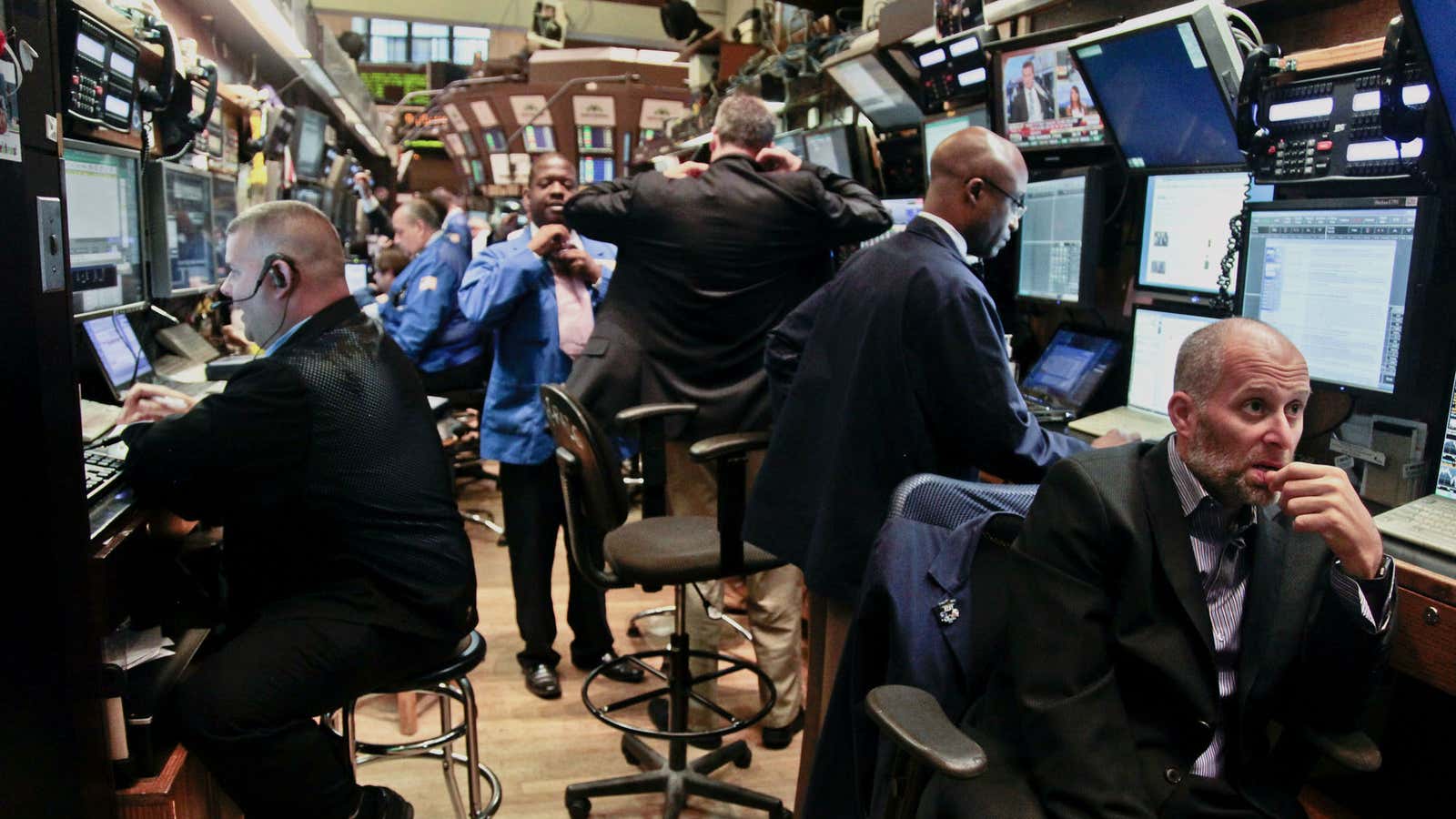A few months ago, Donald Trump said the best thing about a strong dollar is that it “sounds good.” The US president also fretted that the dollar may be too strong, in fact, “and partially that’s my fault because people have confidence in me.”
No longer. Traders are turning against the US currency, with speculative positions turning net short for the first time since May 2016. That means that more traders expect the value of the dollar to fall than rise, according to Reuters.
Using data from the US Commodity Futures Trading Commission (CFTC), Reuters valued traders’ position in the dollar by taking the inverse of published information on positioning in six other currencies against the greenback—the Japanese yen, euro, British pound, Swiss franc, Canadian dollar, and Australian dollar. For the week ending July 18, the trading data showed a net short position of $1.91 billion, reversing a net long position of $62.5 million the previous week. Three months earlier, the net long position was worth more than $15 billion.
The CFTC data offers a relatively narrow snapshot of the trading universe, because it covers participants who primarily trade on the Chicago and New York futures markets, and trade solely to make a profit based on the price movements of the currency. However, it is still seen as a good gauge for wider sentiment on the direction of currency markets.
The tide is clearly turning against the American currency. The US dollar index has dropped to its lowest level in more than a year, as the Trump administration is embroiled in a probe into Russian meddling in the presidential election and the Republican-led Congress struggles to pass major policies. This has led markets to abandon hope that promised deregulation, tax cuts, and infrastructure spending will be enacted any time soon. The IMF recently cut its forecast for US economic growth on the assumption that growth-boosting policy reforms are looking unlikely.
On top of all this, slow economic growth at the start of the year and persistently low inflation have convinced some investors that the Federal Reserve might delay interest-rate hikes, which would have helped push the dollar up. Instead, other currencies have been strengthening, most notably the euro, which is at its highest level agains the dollar since January 2015 and speculative traders are the most bullish they’ve been in six years.
